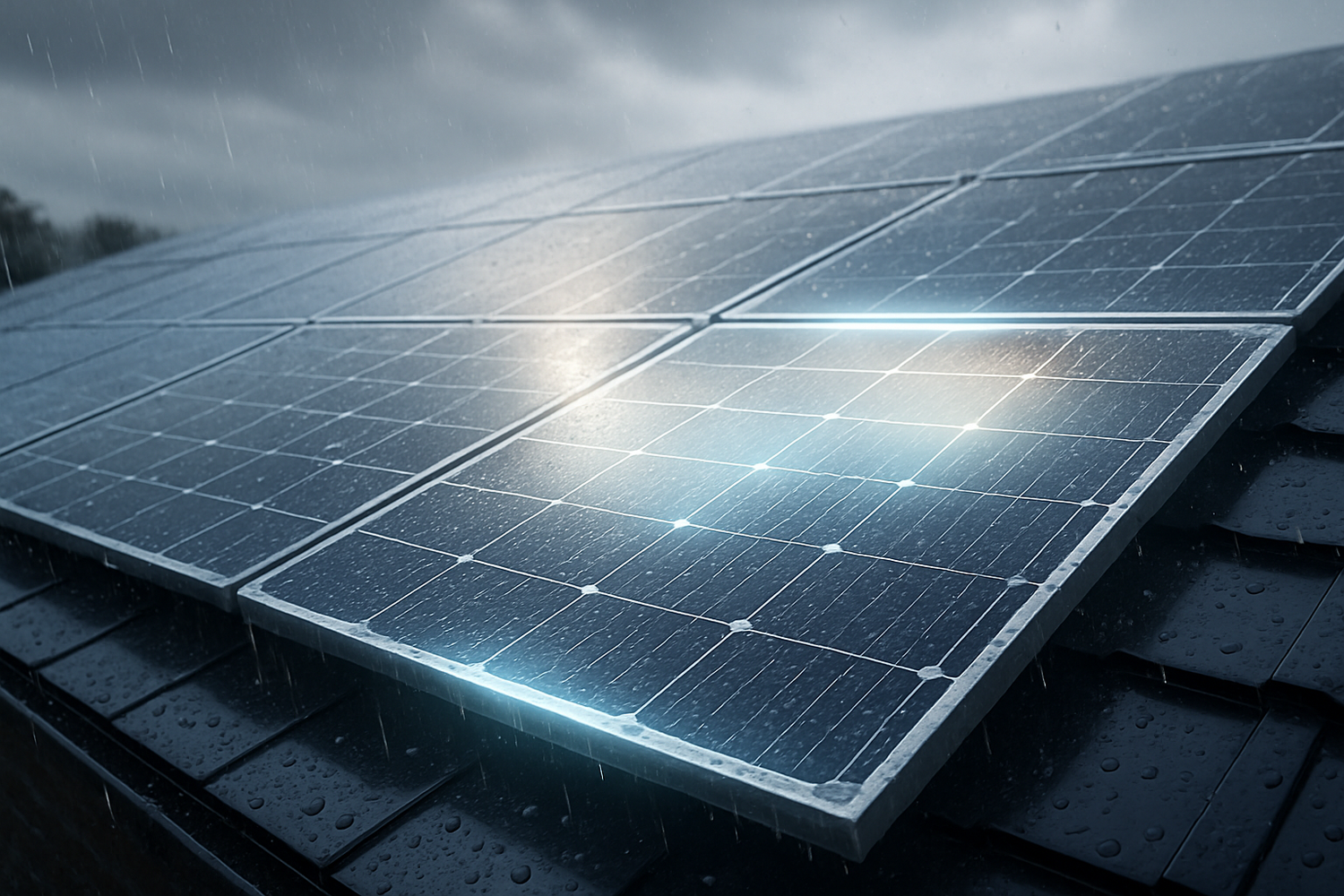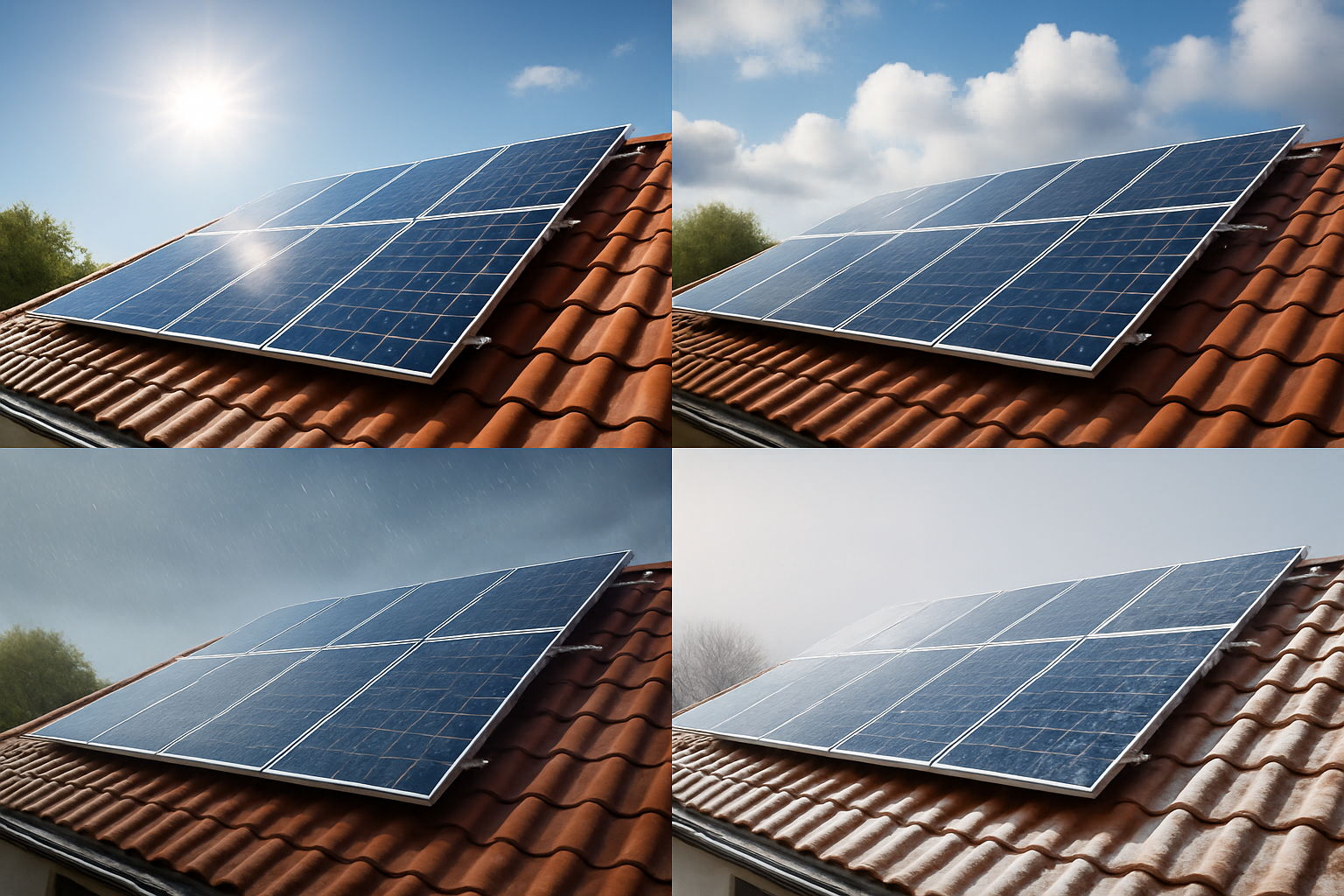Many people considering solar energy for their homes often wonder about its performance during less-than-ideal weather. Will rain wash away your savings? Does a foggy morning mean no power? What happens when snow blankets your roof? These are valid questions, and understanding how rooftop photovoltaic (PV) systems react to various weather conditions is key to appreciating their resilience and effectiveness.
Solar energy is a cornerstone of modern power solutions, offering a path to energy independence. Our years of experience in the solar industry, specializing in lithium battery manufacturing, energy storage systems (ESS), and integrated solutions, show us that modern PV technology is remarkably robust. Let's delve into how your rooftop PV system performs when the sun isn't shining brightly.

Rain's Interaction with Your Solar Panels
When rain falls, many assume solar panels cease to produce electricity. This is a common misconception. While heavy rain may reduce output, light rain can actually offer a surprising benefit.
The Cleaning Effect
Rain acts as a natural cleaning agent for your solar panels. Dust, pollen, dirt, and other debris can accumulate on the panel surface over time, slightly reducing their efficiency. A good rainfall helps wash away these impediments, keeping your panels cleaner and ensuring they absorb sunlight effectively when clear skies return. This natural cleaning minimizes the need for manual maintenance, which is a practical advantage for homeowners.
Output During Rainfall
Solar panels continue to generate electricity during rainy conditions, albeit at a reduced capacity. Photovoltaic cells convert both direct and diffuse sunlight into electricity. Even when clouds obscure the sun, diffuse light still reaches the panels. On rainy or overcast days, PV panels typically produce anywhere from 10% to 25% of their optimal capacity. For instance, a University of Port Harcourt study noted a 23.80% loss in power output due to light cloud cover compared to full illumination. However, this still represents significant energy generation, contributing to your home's power needs.
Fog and Cloud Cover's Influence on Solar Production
Cloudy or foggy conditions are perhaps the most frequent concern for solar owners. The amount of sunlight reaching your panels is directly related to cloud density and type.
Understanding Diffuse Light
Clouds do not entirely block the sun's rays; instead, they scatter and diffuse them. Solar panels are designed to capture this diffuse light. This is why even on a heavily overcast day, your system will still generate power. The ability to harness diffuse light is a core aspect of photovoltaic technology, ensuring continuous, though reduced, energy production.
Efficiency Drop in Overcast Conditions
The reduction in output varies based on the thickness and type of cloud cover. Light cloud cover might lead to about 23% less output, while heavily overcast conditions can reduce production by up to 67%. Some studies even indicate a potential drop to 10-25% of peak capacity on very overcast days. However, systems with specific designs, such as those with flatter panels or panels facing multiple directions, may better harness diffuse energy. Factors like time of year and geographic location also play a role, as more daylight hours in summer generally mean more total energy production, even with some cloudiness.
Consider the table below for a general overview of solar panel efficiency under different sky conditions:
| Sky Condition | Typical Efficiency Range (Relative to Clear Day) |
|---|---|
| Clear, Sunny Day | 100% |
| Partly Cloudy Day | 50-80% |
| Heavily Overcast Day | 10-25% |
| Light Rain | 10-20% |
Snow's Effect on Rooftop Solar Systems
Snow presents a unique challenge for rooftop PV systems, primarily due to physical obstruction. However, solar panels are designed with this in mind.
Physical Obstruction and Power Loss
A layer of snow can block sunlight from reaching the panels, potentially ceasing power generation if the coverage is complete. Even a thin layer of snow can significantly reduce production. For example, some observations show that 30% panel coverage by snow can cut production by 60-90%. This is because solar cells are wired in series, and shading even a small part of a panel can impact the entire module's output due to bypass diodes.
Natural Melting and Tilt Angle
Fortunately, solar panels are typically installed at an angle, which encourages snow to slide off naturally as it melts. The dark surface of the panels absorbs solar radiation, generating heat that helps melt the snow. Even minimal exposure to sunlight can initiate this process. The tilt angle of your panels is crucial here; steeper angles facilitate quicker snow shedding. In fact, studies show that snow losses generally represent less than a 10% annual energy loss, with some regions experiencing only 3% annual losses for low-tilt angle arrays.
The Albedo Effect
An interesting phenomenon in snowy regions is the "albedo effect." Snow on the ground around your solar panels can reflect sunlight, acting as a secondary light source. This reflected light can increase the amount of radiation available to the panels, potentially boosting their output. This effect can partially offset the losses caused by direct snow cover, showcasing the adaptability of solar technology in winter.
Optimizing Rooftop PV Performance in Diverse Weather
While weather influences solar output, several strategies and technologies help maintain consistent performance and maximize your energy independence.
Monitoring and Maintenance
Regular monitoring of your system's output allows you to track performance and identify any issues promptly. While rain often handles basic cleaning, in areas with heavy dust or persistent snowfall, occasional manual cleaning can ensure optimal efficiency. Brushing off snow can help maintain optimal performance. High-quality installations are also key to increasing resilience against extreme weather, with standardized practices improving system performance.
Advanced System Design
Proper system design, including optimal tilt angles and careful consideration of potential shading from surrounding structures or trees, is critical. Modern solar panels are built to withstand various weather conditions, including extreme temperatures, wind, and hail. The International Renewable Energy Agency (IRENA) and the International Energy Agency (IEA) consistently report on the rapid growth of solar PV globally, highlighting its increasing cost-effectiveness and rapid scalability, which speaks to its robust design and widespread adoption.
Energy Storage Solutions
One of the most effective ways to ensure energy reliability, regardless of weather fluctuations, is integrating energy storage. Our lithium iron phosphate batteries (LiFePO4) offer high performance, safety, and reliability. Combining them with a home energy storage system that integrates these batteries with a hybrid inverter and solar panels creates a resilient power solution. This allows you to store excess electricity generated on sunny days and use it during cloudy, rainy, or snowy periods, providing continuous power and enhancing energy independence. The U.S. has seen significant growth in hybrid PV/battery energy storage system projects, with approximately 45% of battery capacity and 26% of utility-scale PV capacity being hybrid projects in 2023.
Smart Inverter Technology
The solar inverter is the brain of your PV system, converting the direct current (DC) electricity from your panels into alternating current (AC) that your home appliances use. Our advanced solar inverters are designed to optimize energy conversion even under variable conditions. Hybrid inverters, in particular, play a crucial role in managing power flow between solar panels, batteries, and the grid, ensuring seamless operation during periods of reduced solar generation. For those seeking complete autonomy, our off-grid solar solutions provide reliable power for homes, farms, and remote cabins, emphasizing self-sufficiency despite weather variations.
Final Thoughts
Rooftop PV systems are remarkably adaptable to diverse weather conditions. While rain, fog, and snow can reduce immediate power output, they do not render your solar investment useless. Rain contributes to cleaning, diffuse light allows for generation even on overcast days, and panels are designed to shed snow naturally. By combining robust PV technology with efficient energy storage and smart inverter solutions, you gain a reliable and scalable energy solution. This approach ensures your home or property maintains consistent power, moving you closer to true energy independence, no matter what the weather brings.





Leave a comment
All comments are moderated before being published.
This site is protected by hCaptcha and the hCaptcha Privacy Policy and Terms of Service apply.